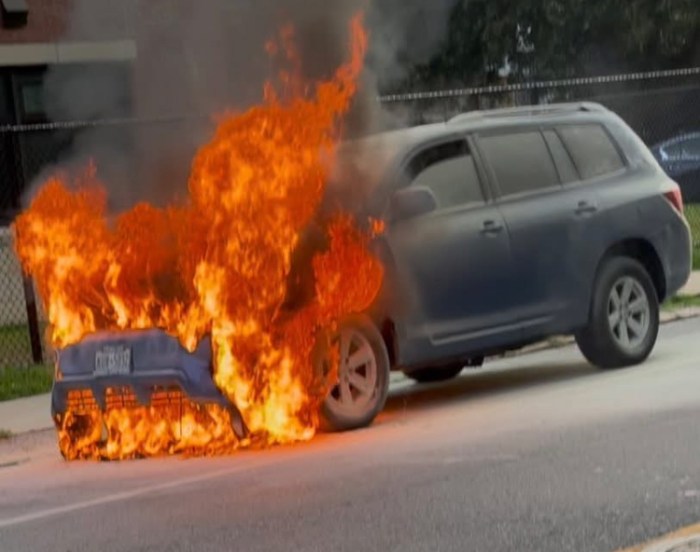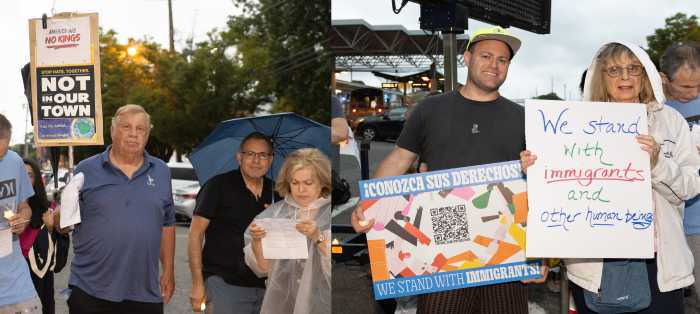Forty Years After the Kent State Shootings
It didn’t seem like the kind of place where the war would hit home. Farms and barns dotted a peaceful landscape and nothing seemed more American than the open plowed fields around Akron, OH. But a war in Southeast Asia had reached over here, across 9,000 miles, to touch forever a college campus with sweeping green slopes, groves of oaks and maples and a spray of dogwoods sprouting white blossoms to welcome spring.
It was a spring where skies were full of ominous clouds. On April 30, 1970, President Richard Nixon announced that the U.S. and South Vietnam had invaded neighboring Cambodia where the Vietcong had found sanctuary to attack American forces with impunity. Since the Cambodian government could not safeguard its own borders, 20,000 American troops would do it for them.
The news ignited a paroxysm of loud and angry protests about the widening of a long and unpopular war. At Kent State University, the reaction was more visceral than most. Selective service was law and conscription into the military preyed heavily on those of draft age. With nerves already frayed over the huge “peace offensive” in Washington D.C., campus unrest and the spate of weathermen bombings, law enforcement was on high alert.
On May 1, in response to Nixon’s announcement, students at Kent hold a mock funeral in which a copy of the Constitution is buried to symbolize its cold-blooded murder. By evening, things turn ugly. Bottles are broken, stores ransacked and windows of local businesses are smashed. Rumors swirl about like driven snow. Mayor Stratom declares a state of emergency, imposes a curfew and sends police in riot gear to herd hundreds of students back onto the campus. Meanwhile, rumors continue to swirl. Some of the babble concerns busloads of outside agitators making a beeline to Kent to throw fuel on the fire.
May 2 dawns with new threats and fears of lawlessness and chaos as more reports of outsiders funneling into Kent heat up the telephone wires. An alarmed Mayor Satrom tells Governor James Rhodes that the civil unrest is too great for the police to handle. Rhodes, a hard-nosed, self-appointed monarch of law and order puts the National Guard on standby. At 8 p.m. more than 1,000 protestors surround the campus ROTC building. As the crowd cheers, windows are shattered and the building is set ablaze. A huge orange flame engulfs the wooden structure causing those watching in the distance to think the city itself is burning.
Fire engines come screaming into the campus but are driven off as rioting protesters throw projectiles at the firemen and slash hoses. As the building burns to the ground more fire trucks arrive but this time with National Guard troops riding shotgun. By midnight order is restored and the crowd disperses.
May 3, 10 a.m.: A bristling Governor Rhodes arrives in Kent. Calling the protestors worse than Nazi brown shirts, he pledges to meet force with force. Soon, National Guard troops with bayonets fixed and in full battle dress descend on Kent. Without advising University officials, both the student body and the teaching faculty watch in astonishment as they march on the campus. As armored personnel carriers pour onto the grounds, one visiting father thinks he’s back in Korea. Nevertheless, with a show of strength, calm prevails until early evening when a large crowd gathers on the Commons protesting the Guard’s presence and their campus being turned into an armed camp. After ignoring several commands to clear out, tear gas is used and 51 people are arrested.
May 4: From midnight to late morning a restless calm pervades the campus. Then, at 11 a.m., the clanging of a bell pierces the air. It’s the victory bell used to celebrate football victories. Today it is rung to summon students to another protest rally held on the Commons. They come in swarms, from all directions, most to participate, others to just watch the drama unfold. After three taut, tension filled days, emotions have risen to a fever pitch.
Bullhorns blare, ordering the assembled throng to disperse immediately. The crowd grows only louder and more unruly. Tear gas grenades are fired but a late morning breeze makes them ineffective. Protestors take the smoking canisters and hurl them back at the Guard. Events now begin to reel out of control; there is a clattering of rifle bolts as the fateful order of lock and load is given. In the face of shouts of “Power to the people! Pigs off campus,” the Guard begins to advance on the Commons.
The protestors scatter as the Guard’s line of march inadvertently brings them onto a practice football field partially enclosed by a chain link fence. A tactical blunder. Poorly positioned, the guard retraces its steps. It looks like they’re confused, retreating, and the momentum shifts to the demonstrators.
As the guard moved back, the demonstrators, in swelling numbers, followed them. Wildly gesticulating, the chanting at the soldiers becomes deafening: One, two, three, four, we won’t fight your…war!
Feeling vulnerable, outnumbered, and surrounded, command structure breaks down. In the ear-splitting cacophony of the moment one of the soldiers thinks he hears fire, or was it hold your fire, or was anything said at all? We will never know. But at the crest of what is known as Blanket Hill, a critical mass had finally been reached, a fission had occurred, and here amid the green slopes, groves of oaks and maples and dogwoods sprouting white blossoms, 28 guardsmen, in one sweeping, terrifying blur, inexplicably wheeled, knelt, and during 13 interminable seconds, fired 67 shots. The .30 caliber bullets traveling at hypersonic speed buried themselves in clumps of grass, chipped cement off statues, ripped bark off trees and violently tore into human flesh.
Then quiet, as an appalling silence, gripped the campus. Kent State had become a frozen snapshot. The hush seemed to last almost an eternity when, all at once, a mighty crescendo of anguish wafted through the air. Screams and wailing shattered the stillness, cries for ambulances ricocheted throughout the campus and sounds of hundreds of running feet stampeded the earth. In the ensuing pandemonium there would be one more shot at Kent State, this one snapped by John Filo, a Kent State student, and freelance photographer, for which he would win a Pulitzer Prize. It shows a 14-year-old runaway, Mary Vecchio, arms outstretched and kneeling hysterically beside the prostrate, lifeless body of 20-year-old Jeffrey Glenn Miller from Plainview, lying face down in a pool of his own blood.
Along with Miller, 12 other students had been shot down, four fatally and one paralyzed for life. One student, Sandra Scheuer, also 20, had nothing at all to do with the protest. A sensitive girl who was a speech and hearing major, she had a soft spot for lonely people and stray animals. Hurrying off to her next class with a friend, a stray bullet found her. She died an hour later on the operating table.
It was the first and only time in American history where troops fired on and killed American students. The reaction was immense. More than 4 million college students protested the shootings. Red flags signifying revolution hung from dormitories. More chants echoed on campuses: What do you want? Revolution! When do you want it? Now! More than 900 college campuses closed including, of course, Kent for the remainder of the semester. Even a few high schools reacted strongly to the tragedy. On a drizzly morning, a day after the shootings, more than 300 students surrounded the flagpole on the front lawn at Floral Park Memorial High School demanding the flag be lowered to half mast. Others, such as myself, (I was all of 12) handed out leaflets to keep the flag flying high.
It seemed that the young everywhere were in revolt. But that’s not really true. Youth, like the country, was divided. There was a saying among this generation “not to trust anyone over 30.” But the Guardsmen who faced the Kent protestors that day were not so much their elders as their peers. Two sides of the same coin, but with divisions between them as deep as any since the Civil War. President Nixon’s “Commission on Campus Unrest” drew the correct conclusions in stating that the shootings at Kent State were “unnecessary, inexcusable and unwarranted.” Eight National Guardsmen were indicted, though none convicted.
There is no gainsaying that judgment, but it doesn’t tell the whole story. A week after the shooting Nassau County Executive Ralph Caso wrote a long letter to the weeklies meditating on the inter-generational conflict and calling the protestors the “gentle generation.” There was nothing gentle about those protestors, they initiated the violence, they trashed businesses that had nothing to do with America’s involvement in Vietnam and they burned down and pillaged a government building. A measure of culpability for the Kent tragedy must be laid at their doorstep.
After the initial protest of the Kent shootings, hostility on college campuses dissipated rapidly. The early ending of the school year and the inviting summer weather turned the thoughts of the young to other pursuits. Two years later, the draft was gone and so were the college protests against the war. Forty springs later, all that remains, is a painful, dark and tragic memory.

































